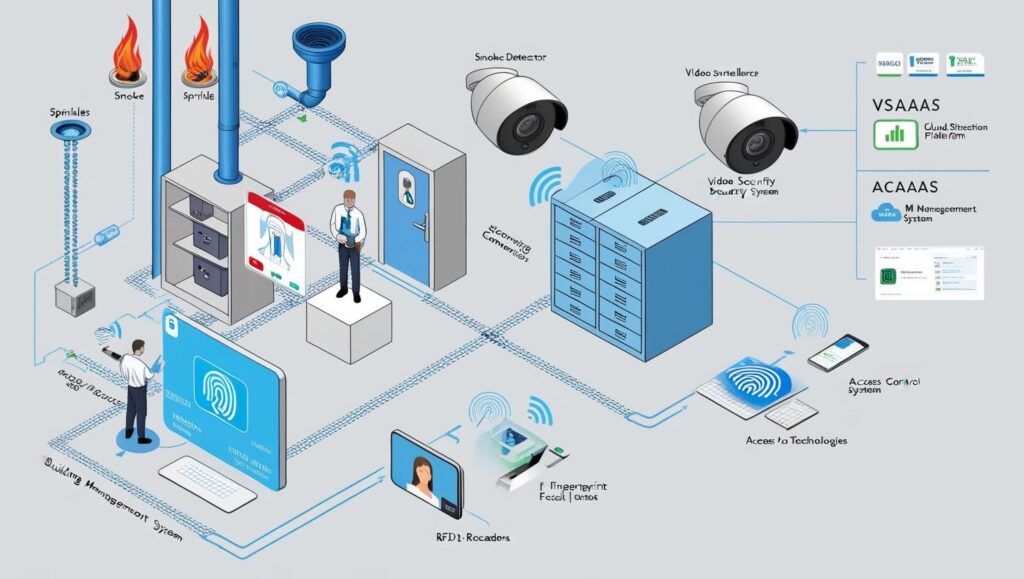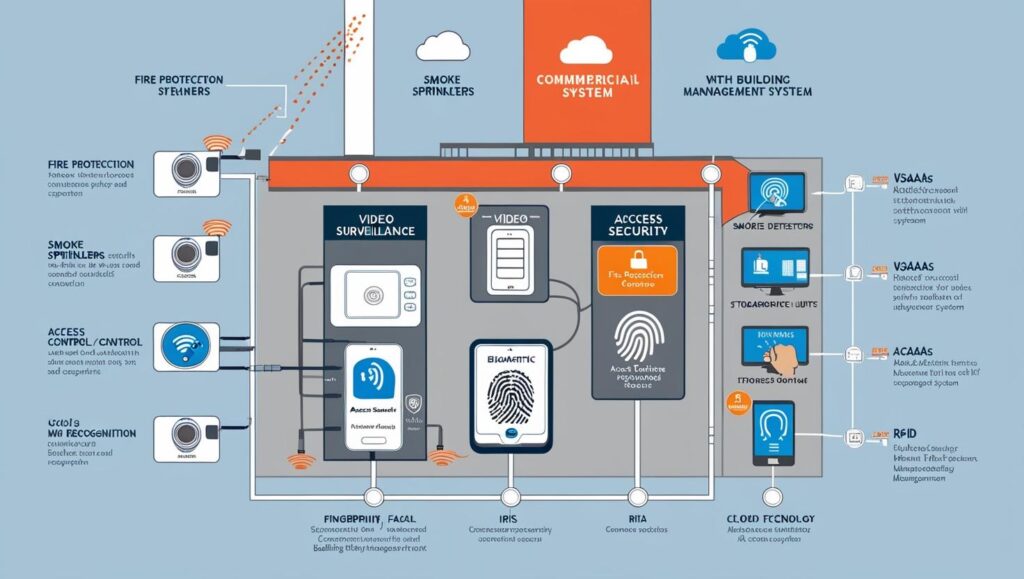Artificial Intelligence (AI) is reshaping industries across the board, and the AI impact on commercial security system market is no exception. Businesses today face increasingly sophisticated threats that demand smarter, more adaptive security solutions. AI is emerging as a key enabler, transforming how companies detect, prevent, and respond to both physical and digital security risks.
Commercial Security System Market Overview and AI Integration
The global commercial security system market is estimated to be valued at USD 222.86 billion in 2025 and is projected to reach USD 381.66 billion by 2030; it is expected to grow at a CAGR of 11.4% from 2025 to 2030. Much of this expansion is being driven by the incorporation of AI technologies. Tools like machine learning, computer vision, and natural language processing are being integrated into surveillance, access control, and intrusion detection systems—offering real-time analysis and smarter threat recognition.

Key AI Applications in Commercial Security
1. Intelligent Video Surveillance and Analytics
AI-powered surveillance systems go beyond recording footage—they analyze it. Using computer vision, these systems can detect unusual patterns, recognize faces, identify license plates, and even monitor crowd behavior. Unlike traditional motion detectors, AI can distinguish between genuine threats (e.g., a person jumping a fence) and false alarms (e.g., animals or falling debris).
2. Enhanced Access Control Systems
AI-driven access control leverages facial recognition, iris scanning, and behavioral biometrics to provide secure, touchless entry to buildings. These systems not only increase security but also reduce the administrative overhead associated with badge-based systems. Over time, they become more accurate by learning from user behavior and adapting to different environments.
3. Predictive Intrusion Detection
Machine learning algorithms are now capable of predicting security breaches before they occur. By analyzing historical data, user behavior, and system vulnerabilities, AI can flag potential intrusions in real time—providing businesses with a proactive approach to physical and cyber security.
4. Integration of Physical and Cybersecurity
The convergence of IT and OT (Operational Technology) networks has made businesses more vulnerable to hybrid threats. AI helps bridge this gap by integrating physical security (e.g., cameras, door locks) with cybersecurity tools (e.g., firewalls, SIEM systems), creating a unified defense system capable of correlating cross-platform anomalies.
Download PDF Brochure @ https://www.marketsandmarkets.com/pdfdownloadNew.asp?id=234307144
Opportunities in the AI-Driven Security Market
1. Development of Edge AI Devices
There is significant opportunity in the development of edge AI-powered security devices—cameras, sensors, and locks that process data locally. This reduces latency and dependence on cloud processing, enabling real-time threat detection even in low-bandwidth environments.
2. AI-Powered Security as a Service (SaaS)
With more businesses adopting cloud infrastructure, Security-as-a-Service platforms using AI are gaining traction. These platforms provide affordable, scalable, and always-updated security systems to SMEs that previously couldn’t afford enterprise-grade protection.
3. Vertical-Specific Solutions
Tailored AI security solutions for sectors such as retail, healthcare, logistics, education, and critical infrastructure represent a growing market. For instance, in retail, AI can detect shoplifting behaviors; in healthcare, it can monitor access to restricted medical supplies.
4. Real-Time Emergency Response
AI’s ability to integrate with emergency response systems (like police and fire departments) offers a chance to develop automated response frameworks. This is particularly valuable for large campuses, airports, and urban infrastructures where response time is critical.

Benefits of AI in Commercial Security
The benefits of AI in security are substantial:
Reduced False Alarms: Algorithms can filter out noise and identify real threats with higher precision.
Proactive Threat Management: Predictive analytics help businesses prevent incidents rather than just respond to them.
Cost Savings: Reduced need for manual monitoring, improved asset protection, and streamlined operations lower total cost of ownership.
Scalability: AI-driven systems can be deployed across multiple locations and customized to varying needs without major hardware investments.
Challenges to Overcome
Despite its promise, AI in commercial security faces key hurdles:
Privacy and Ethical Concerns: Facial recognition and behavioral tracking raise questions about surveillance overreach and data rights.
Algorithmic Bias: Poor training data can lead to biased threat detection and misidentification.
Cybersecurity Risks: AI systems themselves are vulnerable to hacking or data poisoning if not properly protected.
Regulatory Compliance: Companies must navigate a patchwork of local and global regulations around AI use and data storage.
Future Outlook
Looking ahead, AI will drive the next wave of innovation in commercial security industry . Advancements in AIoT (AI + Internet of Things), natural language threat analysis, and behavioral biometrics will continue to push the envelope. Security will become more predictive, autonomous, and integrated, moving away from siloed solutions toward unified command platforms.
AI is not just enhancing commercial security—it is redefining it. As businesses grapple with increasingly complex threats, AI provides the intelligence, scalability, and speed required to stay ahead. With opportunities in edge computing, vertical-specific systems, and proactive threat detection, AI stands as the cornerstone of next-generation security systems. For businesses looking to future-proof their security infrastructure, embracing AI is no longer an option—it’s a necessity.